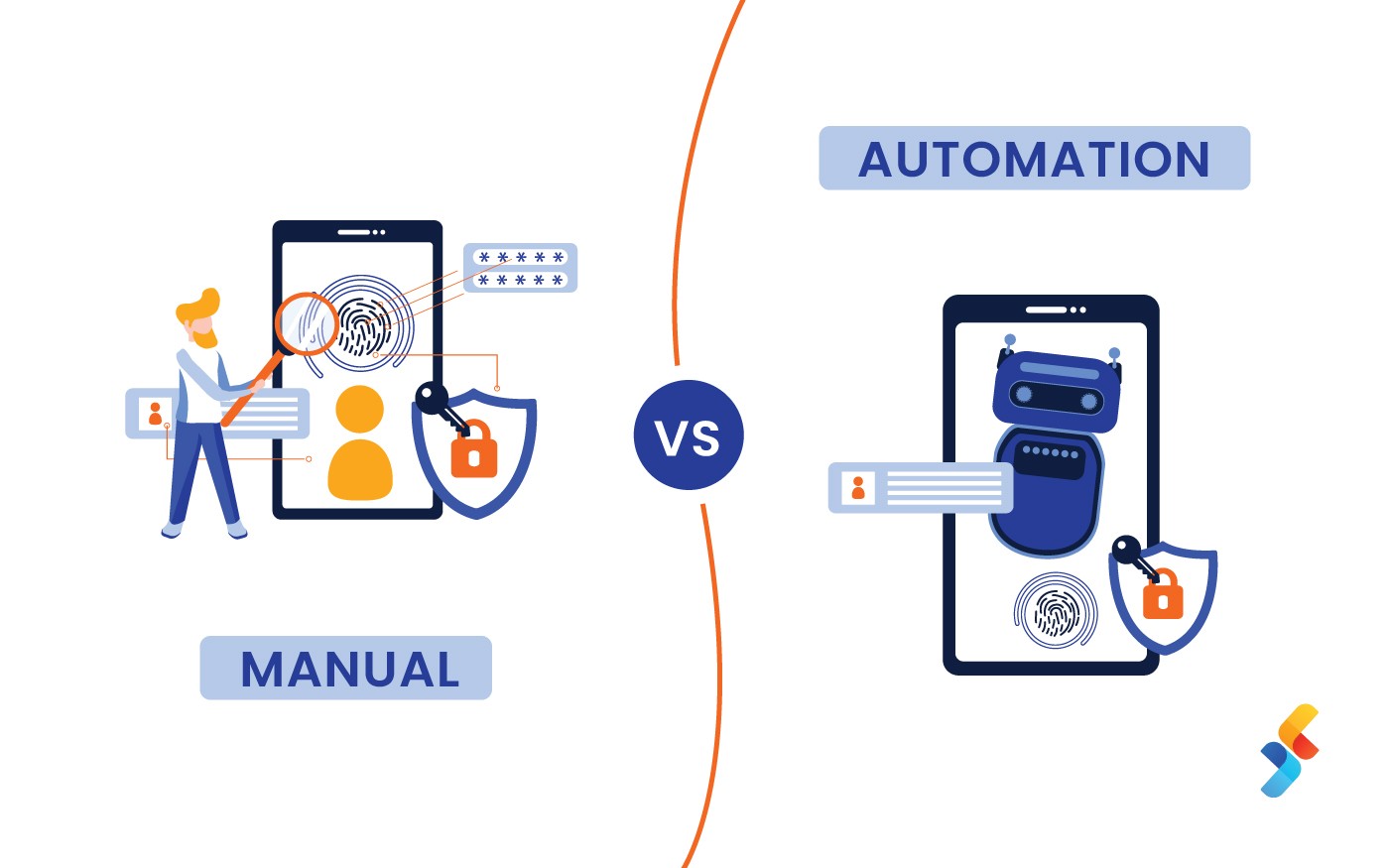Test automation can bring many benefits to your testing cycles, allowing you to test better with less effort. It is less time consuming as well! Many companies still run only manual tests because they don’t know how to properly integrate automated testing in their development process.
Automated testing means that a machine does, what a human used to do, quicker, with less errors, 24/7. Does it sound familiar?
Then, machines started to take over all the repetitive and boring tasks. Humans quickly tend to lose concentration with that kind of work or to overlook things that weren’t right. Machines are more reliable and faster in this.There’s also an obvious big starting investment when introducing change, especially this kind of change. Usually the smaller companies are afraid that the returns won’t be as expected or if there will be a ROI at all.
Back then people needed this kind of automation to produce the exact same parts that match perfectly with other parts so that the assembly could be done in less time and thus enhancing the production.
Well, let’s have a closer look at the top benefits of automated testing.
Benefits of Automation Testing
1. Return on Investment
Let’s start from the beginning: the big initial investment. This may be a hold back for many, but it is proven that the return of that investment is a long-term one and it will also save time.
ROI – benefits of automated testing
2. Early Bug Detection:
Unlike manual testing, bugs can be detected early during the development phase in an automated testing which saves a lot of time during lifecycle for both developers and testers.
Automation helps you find bugs in the early stages of software development, reducing expenses and working hours to fix these problems as well.
3. Running Tests Anytime, Anywhere:
No matter where you are in the world. You can start the tests when you leave the office and when you get back in the morning you can see the results and keep on working. You can even do that remotely if you don’t have a lot of devices or you don’t have the money to buy it.
4. Fewer Human Resources:
You don’t need a lot of people: you would need a test automation engineer to write your scripts to automate your tests, instead of a lot of people doing boring manual tests repeatedly.
5. Reusability of Scripts:
The scripts are reusable:
You don’t need new scripts all the time, even if the version of the OS on the device changes
It allows you to redo the test the same, without forgetting any steps
6. Testing Capabilities:
Automation testing offers an unmatched and huge testing capability. The mobile app needs to be tested on multiple devices, OS versions, screen sizes etc. which can be efficiently done through automated testing and not by manual testing. In fact, it is almost impossible to get perfect results through manual testing.
7. Reliability:
Automated testing is more reliable and way quicker when running boring repetitive standardized tests which cannot be skipped, ever, but may cause errors when manually tested.
8. Improves Accuracy:
We have been saying this time and again that automation testing overcomes the shortcomings of manual testing. It has improved the accuracy to a great deal by giving error-free results unlike manual testing where testing is error-prone, delays the delivery and increases the cost. It is especially a boon in stress testing where getting error free results in manual testing is almost impossible.
9. Simultaneously:
You can test more devices simultaneously resulting in comparative detailed reports generated in less time with the exact the same parameters, because the exact same scripts were run.
10. Better Test Coverage:
Test automation can easily execute thousands of different complex test cases during every test run providing coverage that is impossible with manual tests. It can only be possible through automated testing as it can run test scripts on multiple computers with varied configurations. It can look inside an application and see memory contents, data tables, file contents, and internal program states to determine if the app is functioning as expected.
11. Continuity:
Automated testing helps testers, such as automation engineers. They can see exactly what other engineers have done, what scripts he has already written and what tests have already been performed and what bugs were already found and fixed, through clear reports.
12. Additional methods:
One of these methods is the stress test in which the capacities of the application and operational infrastructure will be tested to its limits with stress test, which can’t be done manually.
13. Volume:
You can run your tests on more than 500 devices in automation testing which is impossible in manual testing. Testing all of them manually would be impossible!
14. Information Security:
The effectiveness of testing will be largely dependent on the quality of the test data you use. Manually creating quality test data takes time and as a result testing is often performed on copies of live databases. Automation solutions can help with creating, manipulating and protecting your test database, allowing you to re-use your data time and again. The time and cost savings in this area are potentially huge.
Conclusion
Automation testing not only helps in saving time and improving accuracy, it does value addition to all the stakeholders involved in the app development lifecycle. Although testing automation offers such huge benefits, but many organizations have not adopted it in its entirety because of its initial cost associated with its configuration. With Agile testing and DevOps methodologies being widely followed in the IT industry, it is advisable to automate your testing
processes completely with renowned automated testing tools to get the best results.
In conclusion there are benefits and drawbacks to both automated and manual testing. This article had the purpose to show how automated testing can help you to make your testing more efficient.
To achieve the best results, you will need a combination of both types: automated testing for repetitive, simple use-cases; and manual testing for reproducing specific bugs, complicated use cases and to ensure the best user experience possible.












